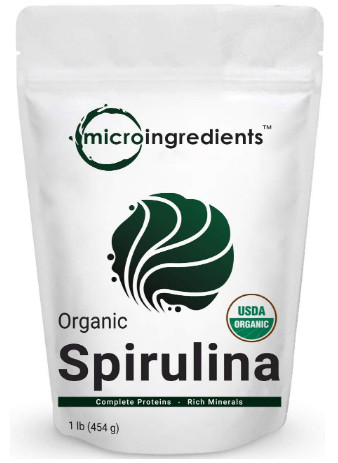Spirulina is an alga or a seaweed or a sea vegetable, it belongs to the Blue Green Algae family. Spirulina is found in the sea and salty lakes. It looks green and it has a refreshing taste. It is the most nutritious superfood supplement. Spirulina offers multi-vitamins, saturated fat, carbohydrate, dietary fiber and it is highly mineral rich. It is commercially cultivated in Spirulina farms.
Organic Spirulina Powder

Spirulina History
Spirulina was found in abundance at Lake Texcoco by French researchers in the 1960s, The first large-scale spirulina production plant, run by Sosa Texcoco, was established in the early 1970s.
Spirulina Ecology
Spirulina thrives at a pH around 8.5 and above, which will get more alkaline, and a temperature around 30 °C (86 °F). They are able to make their own food and do not need living energy or organic carbon source.
In addition, spirulina has to have an ensemble of nutrients to thrive in a home aquarium and pond.
Spirulina for Food Security
As an ecologically-sound, nutrient-rich, dietary supplement. Spirulina is being investigated to address the food security, malnutrition, and as dietary support in long-term. Its interesting food security is for lower land and water. Our needs to produce protein and energy than required for livestock as meat sources.
Spirulina Nutrition Facts
Dried spirulina contains 5% water, 24% carbohydrates, 8% fat, and about 60% (51–71%) protein. It is a complete protein source, containing all essential amino acids.

Spirulina Flakes Animal grade

